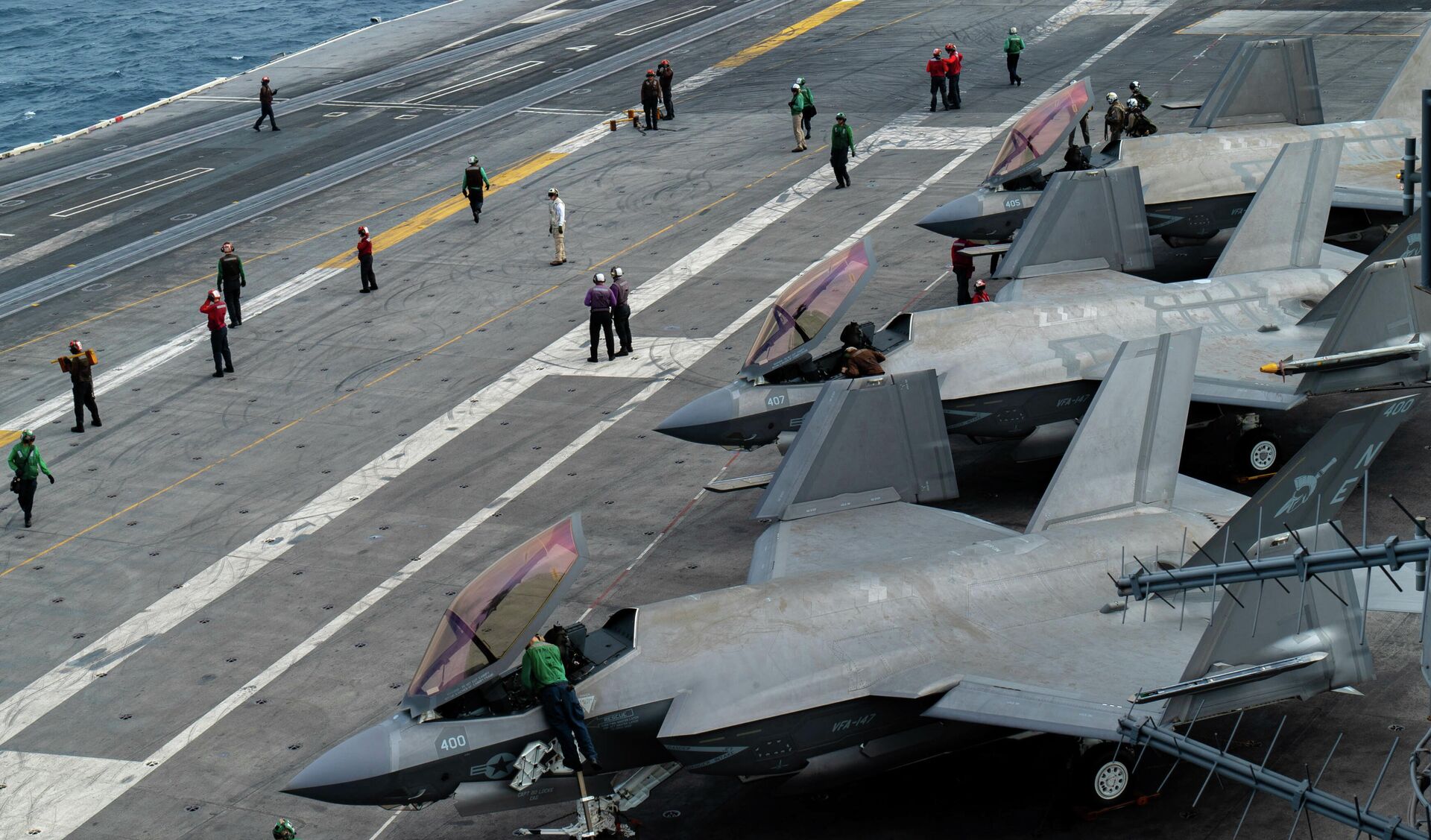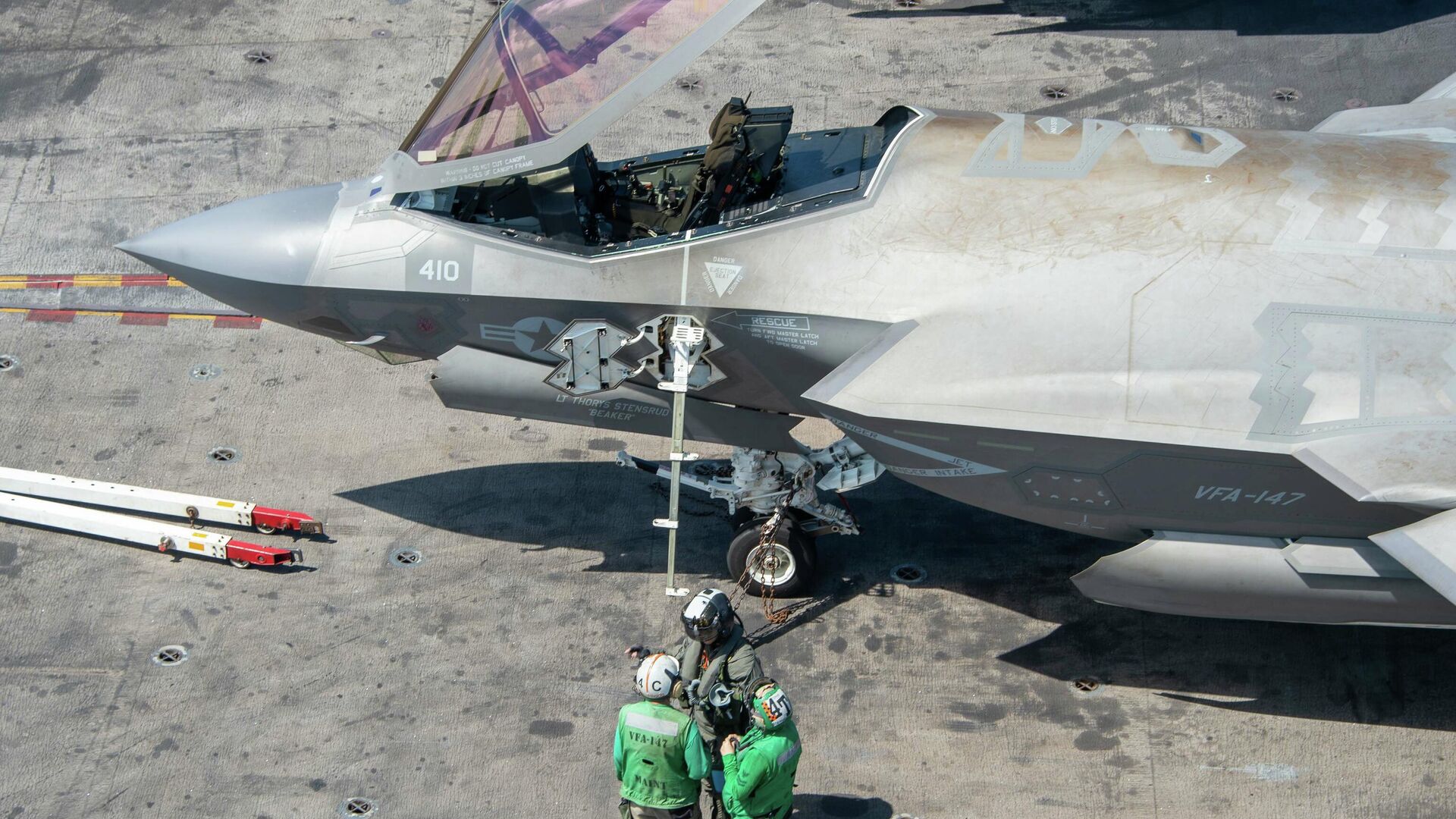Photos: US Navy’s F-35 Stealth Fighters Seem to be Rusting on South China Sea Voyage
00:26 GMT 01.02.2022 (Updated: 20:03 GMT 19.10.2022)
Subscribe
Lockheed Martin’s F-35 Joint Strike Fighter is notorious for its myriad failings despite being a technically advanced and expensive aircraft. Having already been barred from flying during thunderstorms or soaring above the speed of sound for long periods, its newest nemesis may be sea spray.
Recent photos from the US Navy’s latest deployment to the South China Sea yielded some unexpected information about the Navy’s most advanced aircraft: they seem to be rusting.

Three F-35C Joint Strike Fighters on the USS Carl Vinson in the South China Sea on January 14, 2022.
The photos come from the USS Carl Vinson and USS Abraham Lincoln, two Nimitz-class supercarriers that have been carrying out flight operations in the South China Sea over the last few weeks. Both warships deployed with 10 F-35Cs on board, a version of the stealth aircraft optimized for the rough-and-tumble life of being launched off the front of a carrier by a catapult during takeoff and yanked to a halt when they land on the back. Another six F-35Bs, the vertical takeoff-and-landing (VTOL) version of the jet, are onboard the USS America, an amphibious assault ship not far away in the Philippine Sea.
A global spotlight was shone on this deployment last week when one of the F-35Cs slammed into the back of the Carl Vinson, injuring seven crew members before sliding off the deck and landing in the sea.
However, it was The Drive’s The War Zone that first noticed the brown markings that seem to be on top of all the F-35Cs on the ship among the dozens of photos published on the Pentagon’s Defense Visual Information Distribution Service (DVIDS) media hub.

(Jan. 28, 2022) An F-35C Lightning II, assigned to the “Argonauts” of Strike Fighter Squadron (VFA) 147, recovers on the flight deck of Nimitz-class aircraft carrier USS Carl Vinson (CVN 70), Jan. 28, 2022.

An F-35C Joint Strike Fighter on the USS Carl Vinson on January 10, 2022, showing rust-colored discoloration on its upper fuselage.
But that couldn’t be rust, right? After all, the F-35 is a highly advanced aircraft, made out of futuristic lightweight materials that disguise its silhouette from radar screens, costs $78 million each, and just generally looks really expensive. It wouldn’t be made out of plain old iron, would it?
Apparently not so. According to Smithsonian Magazine, a common type of radar-absorbent material (RAM) is iron ball paint, which contains tiny pyramids of carbonyl iron ferrite that turn a normally-clear radar return into a chaotic scramble of radar waves, only a small portion of which make their way back to the radar receiver.
Every US stealth aircraft has used it, including the SR-71, B-2, F-117, F-22 and the F-35. China’s J-20 likely uses it, too. However, only the carrier-borne B and C variants of the F-35 have ever come anywhere near the briny foam so infamous for accelerating the oxidation of iron.
One might assume that Lockheed Martin would plan for such a problem, but considering the plethora of failings in its design the defense giant would also have been expected to anticipate - such as not handling being struck by lightning or vibrations caused by flying above the speed of sound - the defense giant overlooking the effects of seawater on its stealth paint seems less far-fetched. On the other hand, it might simply not be that much of a problem beyond being an eyesore.

